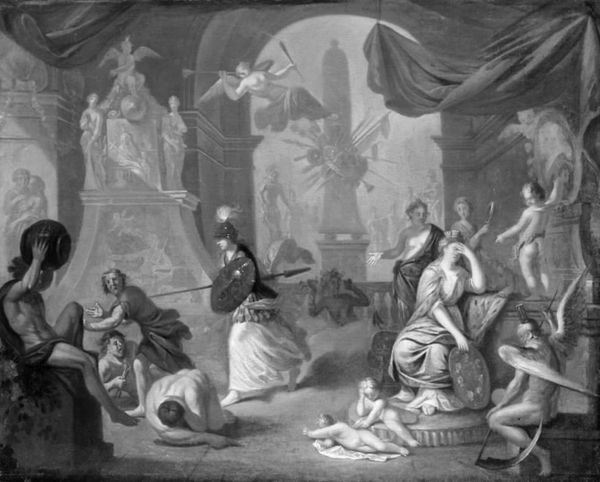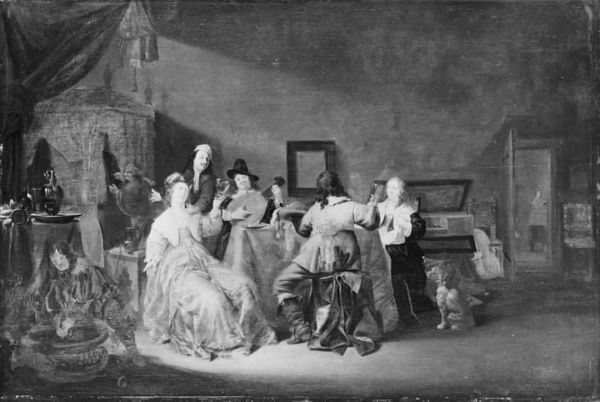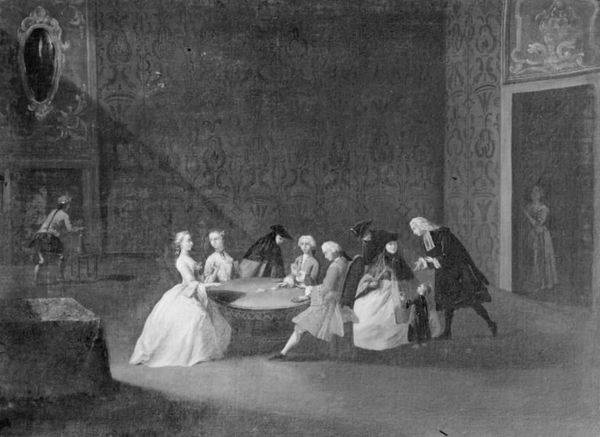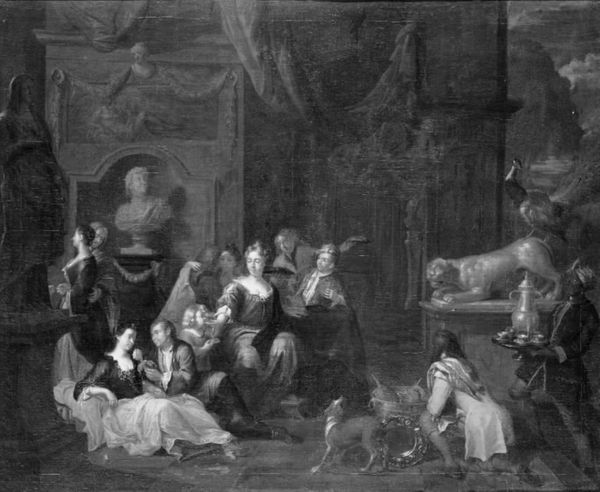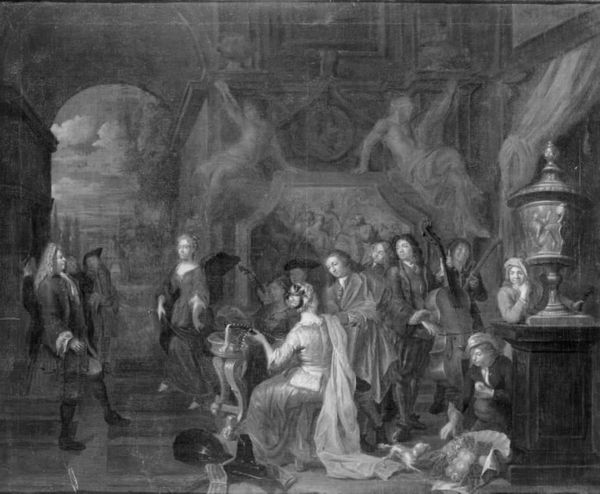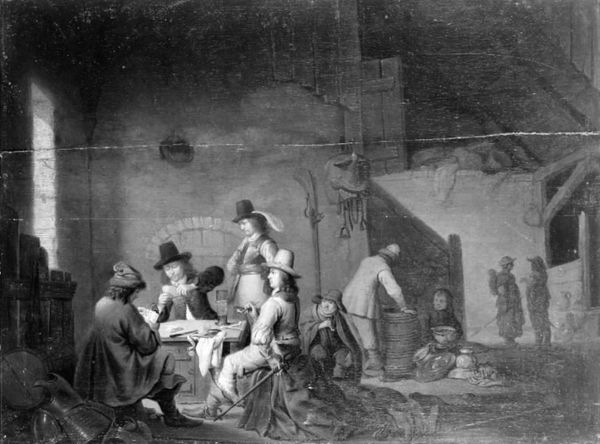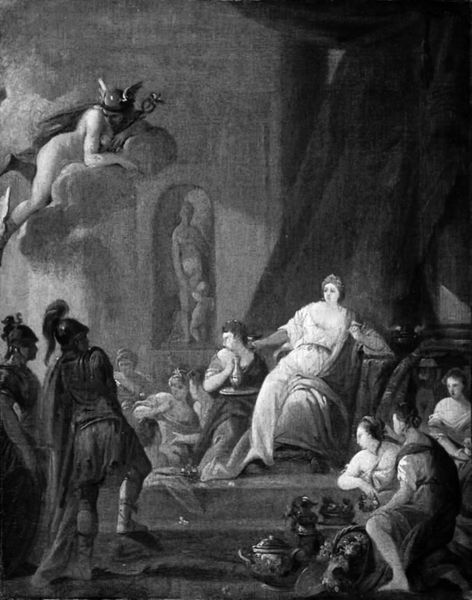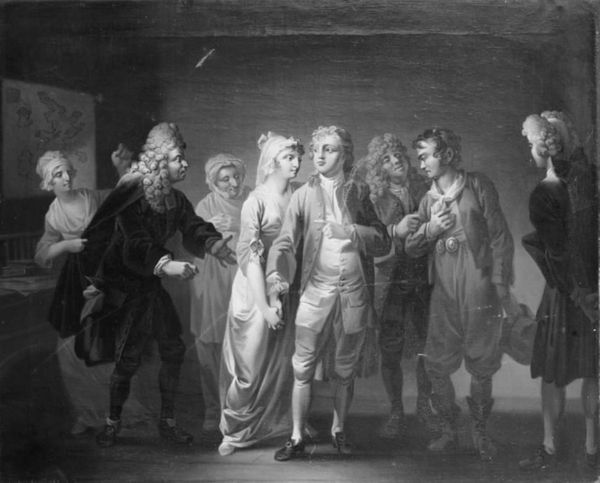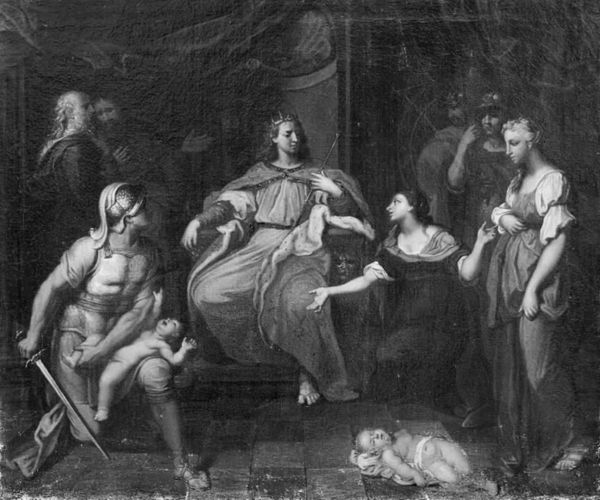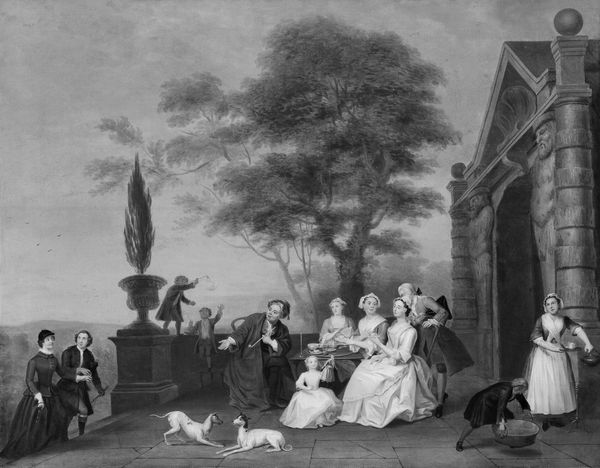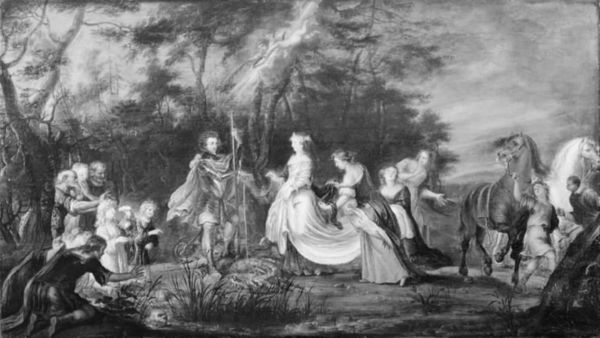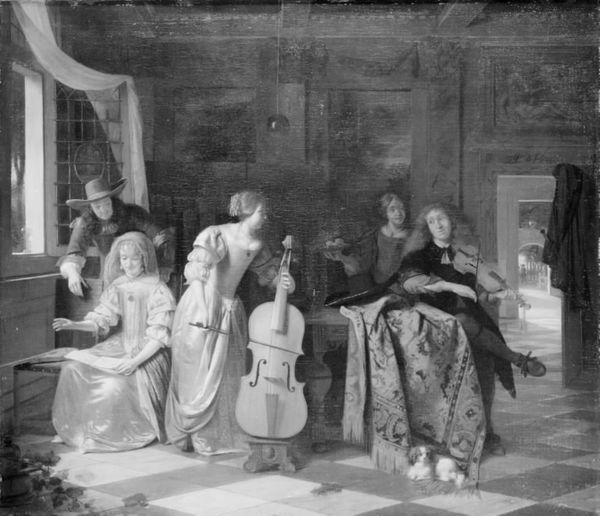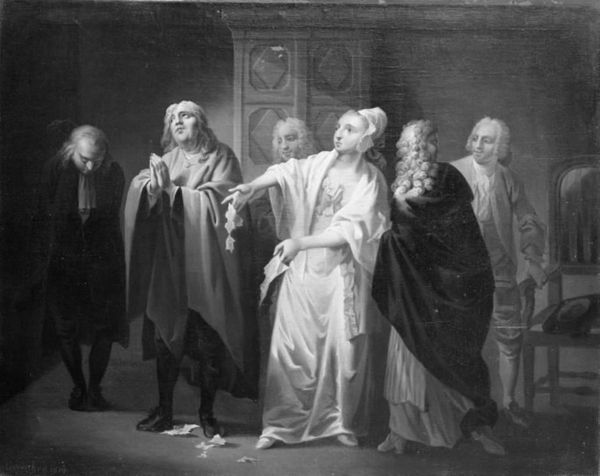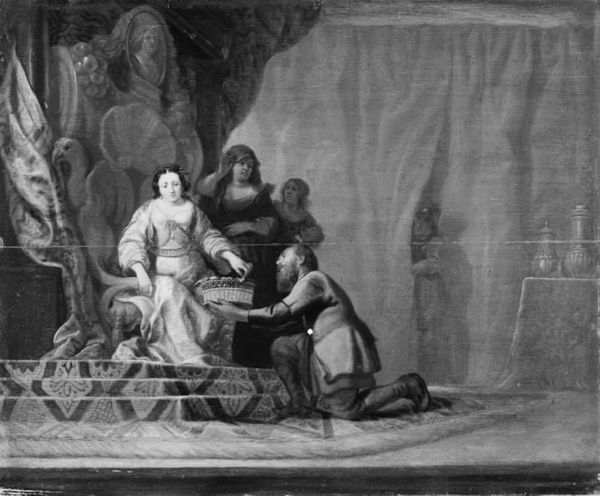
painting, wood
#
portrait
#
narrative-art
#
dutch-golden-age
#
painting
#
sculpture
#
figuration
#
black and white
#
wood
#
genre-painting
#
history-painting
#
monochrome
#
realism
#
monochrome
Dimensions: 41 cm (height) x 53 cm (width) (Netto)
Editor: Here we have "Guard-Room," made sometime between 1643 and 1674 by Thomas Mathisen. It looks like an oil painting, currently residing at the Statens Museum for Kunst. It’s monochrome, almost silvery in its tones, and feels incredibly intimate despite depicting a group of soldiers. What draws your eye when you look at this piece? Curator: I am immediately struck by the apparent realism, and I wonder about the economic realities embedded within. The production of oil paint at this scale would necessitate a well-established mercantile system for pigment procurement. Beyond the financial aspect, the artist had to purchase wood and likely prepare his own gesso. The choice of subjects within—soldiers at leisure—hints at patronage, likely commissioned by those who profited from military activities or aspired to be associated with military might. Don’t you think so? Editor: I hadn’t considered the raw materials as indicative of social power, that’s insightful! The work, considered as an object, embodies trade routes, manufacturing practices and the aspirations of an elite class, more than the individual soldiers shown. How interesting. Curator: Exactly. Notice also the details given to armor and clothing – were these mass-produced objects or custom-made status symbols? Understanding how these items were created and consumed offers insight into the cultural values of the period. And what can the texture tell us? Was the paint applied meticulously or quickly and gesturally? Editor: The monochrome aspect deemphasizes the pigment. That makes it feel less about opulent display, and perhaps more about emphasizing the form and light through paint application. Curator: Yes, which challenges us to consider why the patron selected such an unusual treatment. What’s communicated through the material simplicity? Was it frugality? Rebellion? A specific narrative intent? Editor: I appreciate how examining its materiality opens up a dialogue about its larger societal place, the culture of art consumption and patronage that’s easy to overlook. Curator: Indeed. Every brushstroke carries a socio-economic weight, and the piece's existence depends on multiple industries working in conjunction. We begin to understand this is an economic artifact of its time, a beautiful demonstration of 17th century markets.
Comments
No comments
Be the first to comment and join the conversation on the ultimate creative platform.
